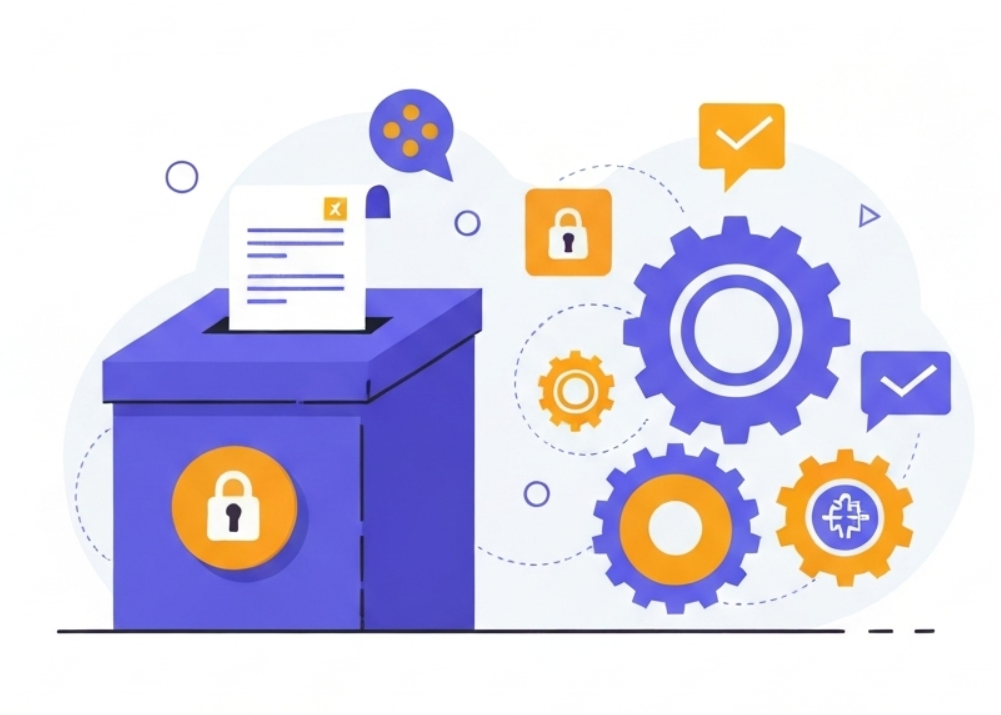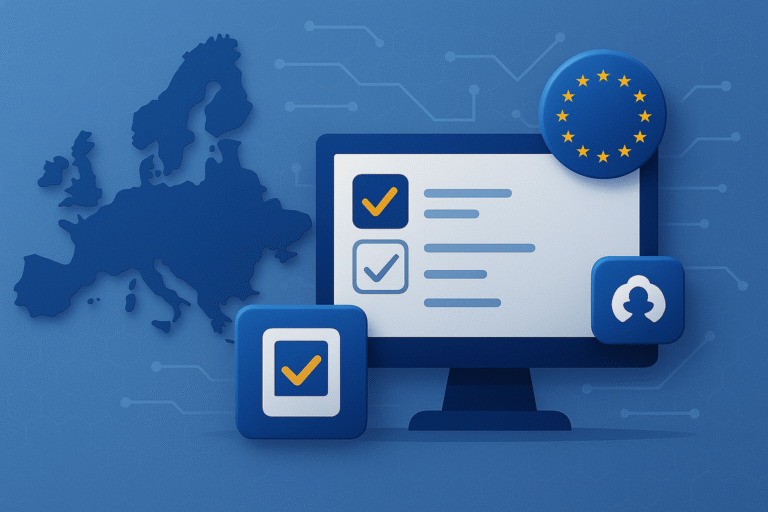
Introduction
Digital voting represents a fascinating but complex frontier for modern democracies. The idea of being able to cast a vote quickly and conveniently, eliminating queues and simplifying electoral processes, is very appealing. However, this innovation brings significant challenges, especially regarding digital security and the protection of voters’ personal data. A digital voting system must guarantee, with the utmost certainty, that the vote is secret, that the voter’s identity is protected, and that the results cannot be manipulated. To fully understand the context of this evolution, it is essential to start with the basics of what is digital democracy and why it matters today.
Essential Characteristics of Secure Electronic Voting
To be considered reliable, an e-voting system must meet a series of fundamental requirements that go beyond simple convenience.
- Vote Integrity: Integrity is the guarantee that a citizen’s vote is not altered in any way during transmission or storage. Each vote must be recorded in an immutable and verifiable manner. This is a key principle to prevent fraud or manipulation, ensuring that the final result accurately reflects the popular will.
- Anonymity and Secrecy: Voting is a personal and secret right. A digital system must ensure that it is impossible to trace a single individual’s vote. Once the vote is cast and validated, it must be separated from the voter’s identity to preserve anonymity. This is crucial to prevent intimidation or retaliation.
- Authentication: It is essential that only authorized individuals can vote. The system must securely authenticate the voter’s identity, ensuring that each person votes only once and that only eligible citizens can participate. Multi-factor authentication systems are often used to strengthen this process.
- Verifiability: A good digital voting system must offer the ability to verify that one’s vote has been correctly recorded, without being able to trace the identity. Verifiability can be both public (anyone can check the total count) and individual (the voter can verify that their vote was included in the final count).
Technologies Supporting Digital Security
To meet digital security and privacy requirements, digital voting systems rely on several advanced technologies.
- Blockchain: Blockchain is one of the most promising technologies for digital voting. It is a distributed and immutable ledger that, by its nature, guarantees data integrity. Each vote can be recorded as an encrypted transaction on a block, which, once added to the chain, cannot be modified. This makes vote manipulation extremely difficult. For a more in-depth analysis, you can read the article the role of blockchain in ensuring transparent voting. A Science Direct report highlighted how this technology can make voting processes more secure.
- Cryptography and Digital Signature: Public and private key cryptography is essential for ensuring security. Votes can be encrypted, making them unreadable to anyone without the private key to decrypt them. The digital signature, on the other hand, is used to authenticate the voter’s identity.
- Digital Identity (Digital ID): The use of a secure digital identity, such as eID in many countries, simplifies the authentication process.
- Multi-Factor Authentication (MFA) and One-Time Password (OTP): To ensure that access to voting is performed only by the legitimate owner, two- or multi-factor authentication methods are often used, such as sending a verification code (OTP) via SMS or an authentication app.
Real-World Examples and Regulatory References on Privacy
Several countries have already implemented, with varying degrees of success, digital voting systems.
- Estonia: Estonia is considered a pioneer in e-voting. Since 2005, citizens can vote online for parliamentary and local elections.
- Switzerland: Some Swiss cantons have conducted electronic voting experiments, but large-scale implementation has been cautious due to doubts about digital security.
- Brazil: Brazil has been using an electronic ballot box system for decades that digitizes the voting process in physical polling stations.
The protection of personal data is a crucial aspect. The General Data Protection Regulation (GDPR) of the European Union establishes rigorous principles for the processing of personal data. To delve deeper into the relationship between technology and regulation, we invite you to read our articles on the role of GDPR in emerging technologies and blockchain and privacy: a possible balance?.
Future Challenges and Perspectives
The future of digital voting is inextricably linked to the ability to overcome existing challenges. Public trust is fragile, and a single successful cyberattack could undermine the credibility of an entire system for years. It is essential that systems are designed with “security by design” and “privacy by design” principles, as outlined in the NIST Cybersecurity Framework.
In conclusion, e-voting is not just a matter of technology, but a challenge that involves trust, digital security, and democracy itself. Protecting data in this context is not an option, but the indispensable premise for any system that aspires to widespread adoption.


